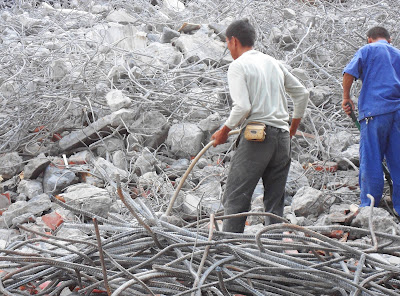Risks Associated with the Use of Hazardous Materials in NYC Construction and Demolition
When it comes to renovation or demolition, you want to ensure that you’re taking all the proper precautions to keep your home or workplace safe and sound. But, unfortunately, you don’t always know what may be lurking behind the walls, under the floorboards, or inside of your windows. Because of this, it’s important to consider using the services of an expert hazardous material testing service NYC firm to ensure that your new home doesn’t become a toxic death trap, and that you aren’t exposed to any potentially hazardous materials during the process of removing old materials from the property.
Understand the issues you're up against
Before you begin any renovation or demolition project, it’s important to know what materials are in your home to plan accordingly. For example, asbestos insulation has been known to cause severe respiratory problems and is still present in many older homes. In fact, with more than 25 million homes built before 1980 that may contain asbestos and other hazardous materials, there’s no reason not to assume you have a problem on your hands. The good news is asbestos can be removed if handled properly. However, ignorance about materials doesn’t absolve homeowners from responsibility for exposure should they experience respiratory issues due to renovation work being performed without proper knowledge regarding proper handling and containment procedures.
Electrical
If you’re renovating an older house, you’ll probably deal with plenty of electrical work. While these types of projects are inherently dangerous, it can get even worse if you don’t take proper precautions. Specifically, you’ll want to wear insulated shoes and leather gloves while handling wiring so as not to conduct electricity through your body. You should also ensure that all metal items, including metal nails in wood and screwdriver blades, are electrically isolated before touching them (in other words, handle them only with insulated tools). This prevents any shocks or electrical accidents that could harm you.
Asbestos
If you plan to renovate or demolish an older building, there’s a chance that you will find asbestos. Many homes built before 1980 are likely to contain it. This is because in those days asbestos was used frequently in home construction materials like vinyl flooring, as well as for other purposes such as insulation and fireproofing. Asbestos exposure can be a problem for homeowners because it can cause mesothelioma cancer and many other health issues. If you suspect your home contains asbestos, seek advice from a professional about what needs to be done to remove it safely and legally.
Lead Paint
The EPA estimates that 7 million homes contain lead paint, which is found primarily in residential structures built before 1978. Lead has no taste or smell, so detecting it can be difficult without a professional lead paint inspection. Even if your home was built after 1978, you should still have a sample test performed to ensure that any renovations you perform do not expose you to hazardous amounts of lead.
Mold
Proper testing for mold must be done before any renovations. Mold is a fungus that grows on damp surfaces. Inhaling spores can cause lung infections and allergic reactions, among other effects. Therefore, it’s best to have a certified professional perform testing before beginning renovations on any property. If you plan to do it yourself, use a kit from your local hardware store. Not only is mold dangerous, but it also comes with high costs associated with its removal.
Toxins and Poisons
Most people know that dangerous chemicals lurk inside products such as paints, pesticides, or cleaning agents. However, it’s easy to forget how hazardous many everyday household items can be. For example, most people don’t realize that drywall contains lead and must be carefully handled during renovation and demolition. If you have it in your home (or business), you need to ensure your contractor understands its dangers and how to handle it safely.
Wood Preservatives
Three major types of wood preservatives are used today: creosote, pentachlorophenol (PCP), and copper-chrome-arsenic (CCA). Wood preserved with CCA was banned in 2003 due to its highly toxic nature. Likewise, Creosote and PCP should not be used on any building where there is no extreme threat of termites, because they can leach out onto other surfaces and are very toxic if ingested.
How Kac Solutions Dealing Hazardous Material
Our hazardous material experts can provide timely assessments and required clearance services before demolition or renovation can begin. With our rapid response time, we are prepared to handle your emergency any day of the week. Kac solutions now to learn more about our hazardous material testing services NYC.




Comments
Post a Comment